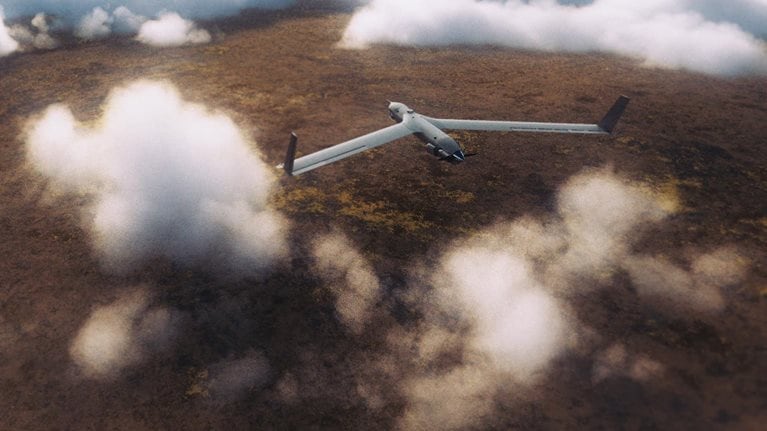The Mission Possible Partnership (MPP), an alliance of climate leaders, was created to supercharge decarbonization of seven of the hardest-to-abate industries: aviation, shipping and trucking, steel, aluminum, cement/concrete, and chemicals manufacturing.
The MPP, led by the Energy Transitions Commission, Rocky Mountain Institute, We Mean Business, and the World Economic Forum, in conjunction with McKinsey & Company as a knowledge partner, recently released findings on decarbonizing aviation in a report titled Making net zero aviation possible. This research builds on the work of other aviation organizations that have already announced initiatives to reduce emissions. In addition to the full report, MPP has also published infographics and an executive summary. Here are some of the major findings and recommendations.
Bringing aviation on a path to net-zero emissions by 2050 is possible
We developed a prudent and an optimistic renewable-energy scenario for achieving net-zero emissions by 2050 (exhibit). The optimistic scenario assumes faster development and adoption of renewable electricity based on technological breakthroughs that drive down cost. As a result, sustainable aviation fuels (SAFs) produced from electricity (power-to-liquids or “PtL”), as well as hydrogen and battery-electric aircraft enter the market earlier and at a larger scale. In the prudent scenario, SAF made from biomass remain the leading energy source.

For both net-zero scenarios, SAFs and fuel-efficiency improvements of aircraft play the largest role in reducing emissions. Carbon-neutral growth will require annual fuel-efficiency gains to be double those of historical gains of 1 percent per year, and the production capacity of SAF must be ramped up by a factor of five to six compared to currently existing or planned plants to achieve carbon-neutral growth by 2030.
Would you like to learn more about our Aerospace & Defense Practice?
The investment required to get global aviation to net-zero average will rise over time
Achieving carbon-neutral growth through 2030 would require $40 billion to $50 billion in funding annually, and about $175 billion would be required through 2050. About 80–90 percent of these investments would go to the production of SAFs. The remainder would go to the development of battery-electric, hybrid-electric, and hydrogen aircraft, as well as the renewable electricity and green-hydrogen production plants required to power them. The total annual capital investment does not include the capital cost of new conventional jet aircraft, which would also be required for a regular fleet substitution/expansion.
Production of sustainable aviation fuels (SAFs) must scale up
SAFs, including biofuel and PtLs, must be brought to market immediately to enable the massive scale-up that will be required to achieve net-zero by 2050. To achieve SAF production levels of 40 to 50 megatons1 by 2030, stakeholders must invest in about 300–400 new fuel production plants and associated upstream infrastructure. The 2030 target of 40 to 50 Mt will present challenges, considering that it typically takes at least five years to build a new SAF plant and get it to full operation, so stakeholders will need to plan new SAF plants within the next two to three years.
The faster the cost decline in renewable-electricity generation, the higher the expected market share of PtL fuel
While biofuels are the only SAF option today, PtL is projected to enter the market at a large scale in the late 2020s and become cheaper in the mid-2030s. The PtL market share by 2050 will depend on how quickly the levelized cost of electricity falls over the next 15 years. Low costs of renewable electricity will enable low green-hydrogen production costs and, ultimately, low PtL costs.
In the optimistic scenario, PtL constitutes the main SAF type from around 2040 onwards. If the cost decline of renewable-electricity generation is slower, however, biofuels are expected to play a significant role in the market in 2050 as long as sufficient volumes of sustainable biomass are directed to the aviation sector.

The path to net zero in aviation
Hydrogen and battery-electric aircraft can make global aviation more efficient starting in the late 2030s
Hydrogen aircraft could enter the market in the 2030s and scale up through 2050, when they could account for roughly a third of aviation’s energy demand. With current aircraft designs, hydrogen aircraft could be range limited to up to 2,500 kilometers. Redesigning airframes and storage technology might unlock longer ranges without reducing the number of available seats. If hydrogen aircraft enter the market around 2035 and achieve longer ranges, they could gain a market share of up to one third by 2050. The estimated market share drops to 13 percent by 2050 if they enter the market by 2040 and only achieve shorter ranges. Assuming breakthroughs in battery chemistries, battery-electric aircraft could potentially power regional aircraft on flights up to about 1,000 km by mid-century.
By 2050, net-zero aviation could require vastly increased amounts of renewable electricity, hydrogen, and sustainable biomass
Up to 9,300 terawatt-hours (TWh) in additional renewable-electricity production capacity would be required in the optimistic scenario. This would represent up to 10 percent of the global electricity production of 90,000–130,000 TWh in 2050.
In the prudent scenario, which sees more reliance on biofuels, 12 exajoules2 (EJ) of biomass could be required for the aviation sector. This would demand 10–25 percent of the global availability of sustainable biomass by 2050. The conversion of 12 EJ sustainable biomass to biofuels will simultaneously entail the production of by-products like diesel/gasoline or naphtha, which will demand another 8 EJ. This means that 20 to 40 percent of the indicative globally available sustainable biomass would need to be devoted to the aviation sector.
Aircraft fuel-efficiency gains and operational measures could significantly reduce emissions
Fuel-efficiency gains for conventional engines, along with improved airframe design, ground operations, air-traffic management, and route planning, represent another lever for reducing emissions in aviation. These measures could improve fuel efficiency by 2 percent per year. Replacing the current commercial aircraft fleet with the most fuel-efficient aircraft in service today would reduce fuel consumption by about 20 percent.
Historically, average efficiency gains of 1 percent annually are typical, but exceptions exist. In the 1980s and the 2010s, surging aviation fuel costs led to increased fuel-efficiency measures. The prospect of future fuel cost increases resulting from the switch to SAFs could again be a driver for increased fuel-efficiency efforts.
Carbon dioxide removal (CDR) solutions are required to remove residual emissions from renewable fuels but cannot replace decarbonization
Renewable fuels reduce greenhouse-gas (GHG) emissions by about 75–95 percent compared to fossil jet fuel. As such, unabated residual emissions of about 120–140 metric tons CO2 equivalent (Mt CO2e) will remain in 2050. Those will need to be mitigated by CDR, including natural climate solutions, hybrid solutions, and engineered solutions, such as direct air carbon capture and storage (DACCS). Counterbalancing the residual emissions could cost an additional $15 billion to $18 billion in 2050 alone.
Decarbonizing aviation is possible, but a concerted effort is essential to achieve the optimistic scenario across multiple areas. It would involve dramatically scaling production of SAFs, reducing costs of and expanding access to renewable electricity, accelerating the development of new types of net-zero aircraft, continuing to improve efficiency gains of existing fleets, and capturing unabated residual emissions.


